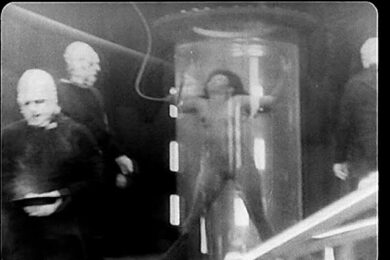davidlynch.com can be a scary place late at night. Shuffling aimlessly through its dark pages and wrestling with its counterintuitive navigation gives one the same vague sense of dread that one finds watching his films. There is a eerie stillness to the site, no flashy banners or sounds, as if some unnameable beast is waiting break free of the HTML and attack you. One time I hit the wrong link and was greeted by a screen sized flash animation of Lynch himself jumping up and down like a hissy toddler.
Everyone knows about the daily weather report but site also used to feature a 3-D art gallery which you could explore using controls which were about as advanced as those from the game MYST. As with other parts of the site, the somewhat outdated flash and HTML made the site far creepy and more mysterious than they would be in a cutting edge, over-designed site (in the same ways that with horror movies, dimly lit, 80’s animatronic puppets, glistening with fake ‘goo’ will always be scarier than anything high speed computers can render)
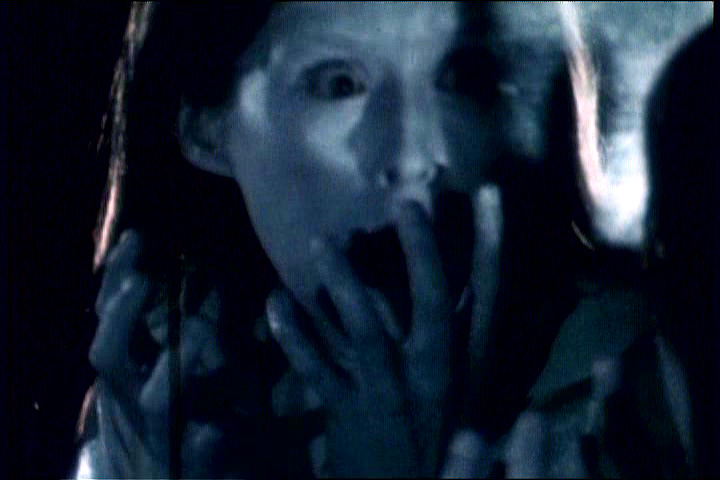
The best part of davidlynch.com has always been the store. For the longest time it was the only way, in America at least, to purchase DVD’s of Eraserhead and The Short Films of David Lynch as well as random gear like World’s Angriest Dog coffee mugs. I purchased both DVD’s in 2001 or so and was instantly the most popular kid on my block (my block being made up of goth’s, film buffs, misanthropes and pot-heads apparently). Both films came in comically oversized boxes which demanded that they be placed at the top of your media tower, because they wouldn’t fit anywhere else. They were a foot by foot square but were actually imperceptibly un-square because you could only put on the sleeve in one direction, to my constant annoyance. Inside were two semicircular cardboard arms (which also only closed one way) suspending the lone DVD in the otherwise hollow box. It was completely gratuitous but the packaging did give you the impression that you possessed something of rare value because the box that contained it was like an Indiana Jones-style puzzle/trap. Maybe if you didn’t replace the DVD in its holster quickly enough, the box would eat your hand.
The Short Films is available this week in more consumer friendly, but not nearly as nifty, packaging. The DVD contents are almost exactly the same, except for a very loud Cramps-esque instrumental on the menu which I swear wasn’t there the first time. There’s still the brilliant and informative introductions by Lynch, whose speaking manner resembles someone with a gun to their head reassuring their family everything is going to be ok, and which seem to be filmed on location in the black lodge from Twin Peaks.
The films also do not disappoint.
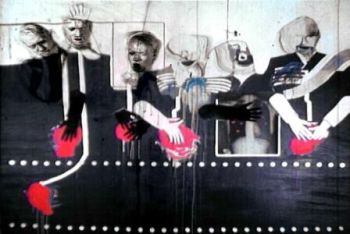
Six Men Getting Sick
For those of you who didn’t know, Lynch started out as a painter. This is the first painting he animated and thus his very first film. As a painter, Lynch seems to draw heavily on the iconography of late-period Francis Bacon but he also seems to be tapping into the dark side of hippy psychedelia. This is very much an art installation and is best viewed in the background of a pretentious arty party for pretentious arty people to enjoy. If you watch it alone for hours on loop you might be sick yourself.
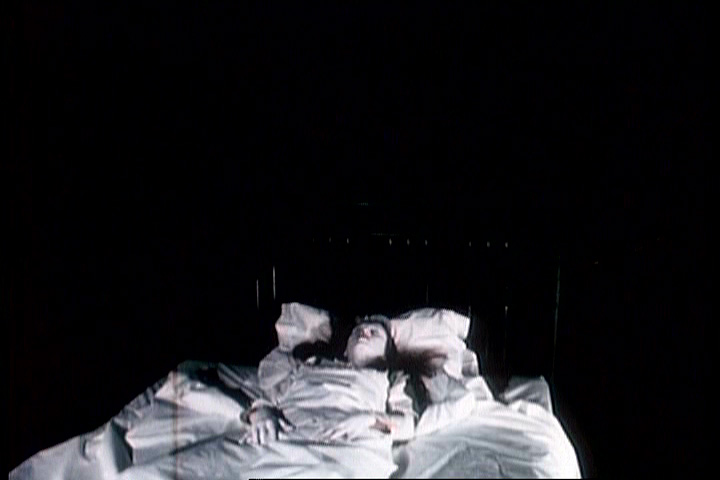
The Alphabet
A film about a girl reciting the alphabet endlessly while in a hallucinatory fever. Jesus Christ, these are some images I didn’t need stalking my dreams. Between the skillful use of additive animation and terrifying shots of a pale girl going mental in a bed, I can completely understand why the American Film Institute shit themselves when they saw this and immediately got out their fat checkbooks.
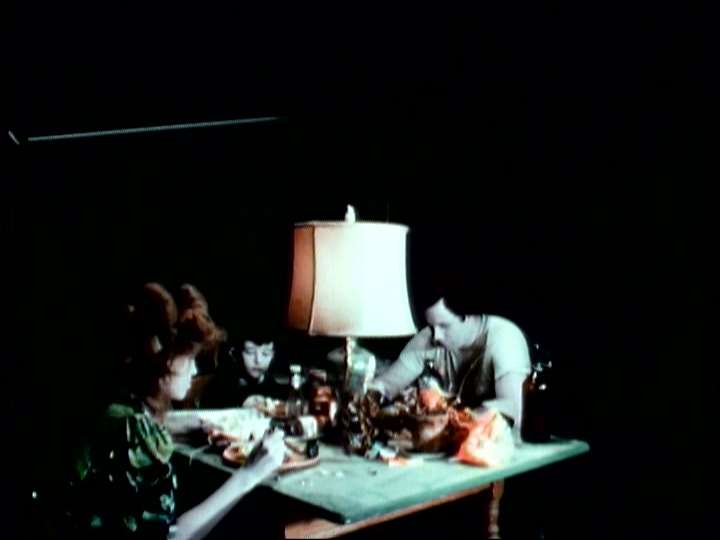
The Grandmother
The fruits of a life changing grant from the AFI, The Grandmother expands upon the unique style of The Alphabet with more elaborate set pieces and cheap but creative special effects. As in most of his films, the imagery don’t make sense in your head but seems strangely familiar in your bones. The Oedipal struggle at the centre of this 30 min short is as simple and devastating as anything in his later work.
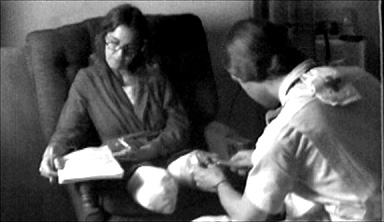
The Amputee
A simple test of different video stocks which turned into an inside joke. An amputee reads a letter aloud while a nurse, in the process of dressing her wound, reopens it and frantically tries to plug up the leak, all unbeknownst to the patient. Absolutely hilarious if you like silent movie style slapstick and senseless gore, which as it happens I do. I have both watched both takes and in my highly dubious opinion, they are pretty much the same. Any connoisseurs of early video stock can feel free to weigh in below.
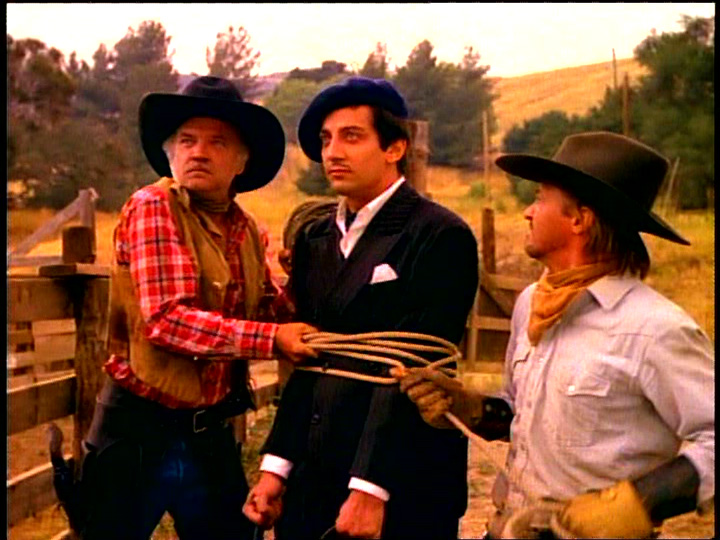
The Cowboy and the Frenchman
This was filmed for a French television show called How the French are Viewed| or something to that effect. Lynch cleverly chose to depict the meeting of not one but two cliche’s. A bunch of cowboys are completely baffled by the appearance of a barrette wearing Frenchman, who they mistake for an extra-terrestrial, coming down the mountain. They go through his suitcase and pull out a clown-car’s worth of baguettes, wine and cheeses etc. Despite a complete lack of communication, they finally bond over WWII, as one does, and proceed to have an unreal party long into the night. Every possible stereotype of both cultures is played out by the expert cast of Jack "Eraserhead" Nance, Tracey "Repo Man" Walter and Harry Dean "many good films" Stanton If only the frenchman were played by Crispin Glover, this would be the surreal acting dream team.
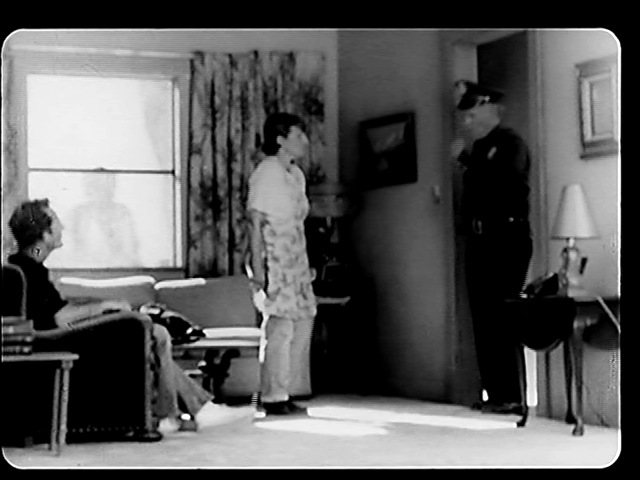
Lumiere
Another great example of Lynch fulfilling and simultaneously pissing all over the brief. Lars von Trier would have met his match if he imposed The Five Obstructions on Lynch. The idea was for several filmmakers around the world to use the original Lumiere cameras to make a 55 second film, which is the amount of film stock the cameras could hold. In the spirit of these humble origins of film, they also could not use synced sound or cut the film once it began rolling. It’s unclear exactly how Lynch got around these constraints but it appears that he filmed projections of films, burning through the screens to reveal the actual set in the last shot. The film packs plenty of punchy images and sinister details into its breezy length. If you blink you might miss the naked girl in the tank or the dark figure in the window when the police arrive. The Lumiere brothers were such amateurs.
Colour correction
Exactly what it says on the tin, which is strange because you half expect this to be some hidden feature. One does have to remember that despite a career built on messing with people’s heads, David Lynch is quite sincere when it comes to video quality, film piracy, and transcendental meditation.
If Inland Empire saw Lynch working as an uncompromising auteur, this collection shows him producing some real gems under massive constraints, both financial and artistic. For my money, I have always preferred the side of Lynch on display here; the side that so successfully infiltrated both Hollywood and Television and perverted their genres from the inside.
See also Austin Collings review of Eraserhead which is also out this week on region 2 DVD:
Eraserhead and 20 more of the best movie posters of all time


